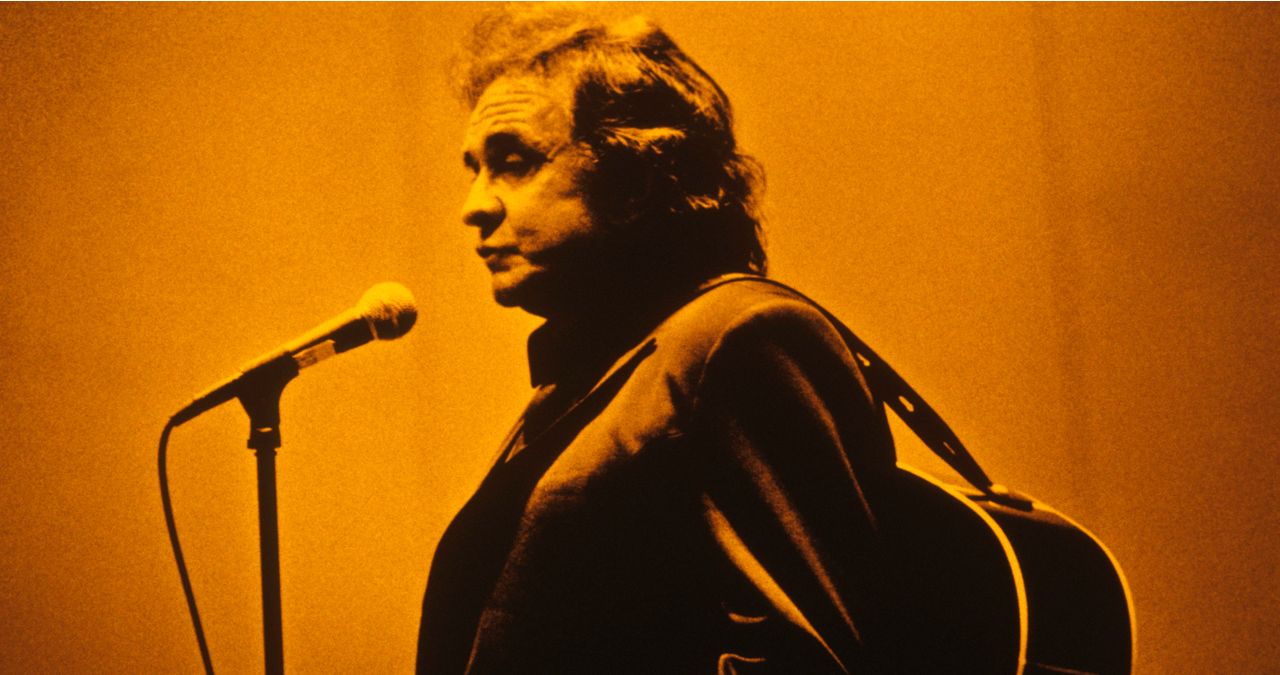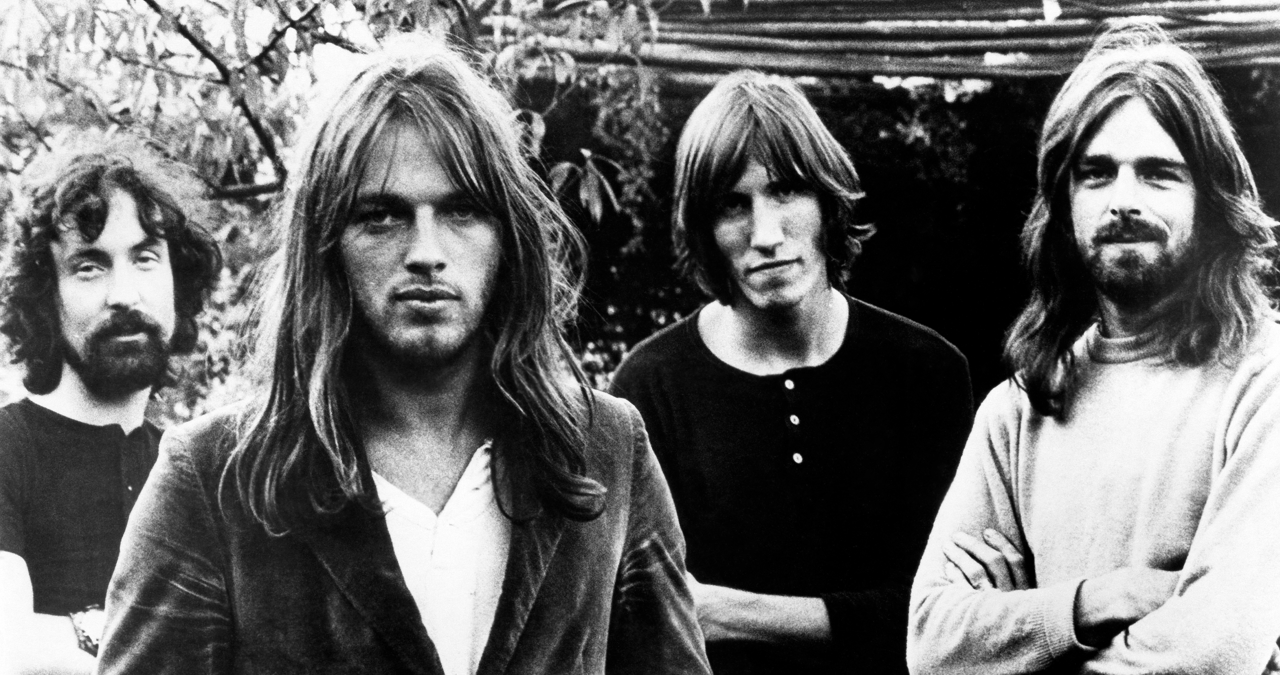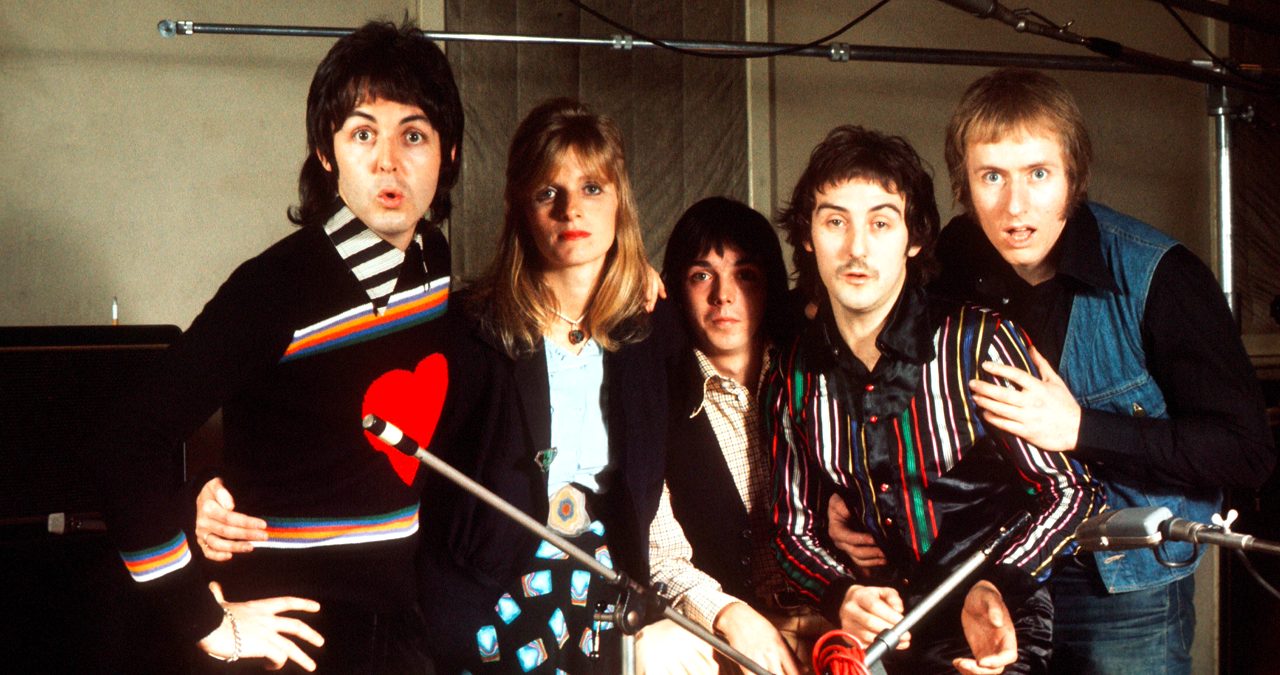"There is no getting around the fact that he repeats the phrase 'simply having a wonderful Christmastime' 17 times": A music professor breaks down the theory behind Paul McCartney's Wonderful Christmastime
Our resident music professor takes on McCarney's divisive festive classic, a Christmas song curiously "built around the most advanced synthesizers available in 1979”

There are few musicians less controversial than Sir Paul McCartney, but his contribution to the Christmas canon has provoked strong disagreement.
On the one hand, Forbes reported that as of 2010, the song was making Sir Paul between $400,000 and $600,000 per year. On the other hand, some people really can not stand it. Esquire went so far as to name it the worst Christmas song of all time. (Steven Colbert feels that this was unfair, so he set out to write the actual worst Christmas song.)
My own feeling is that while Wonderful Christmastime may not be a masterpiece on the level of She Came In Through The Bathroom Window, it is more musically substantive than its reputation suggests.
The lyrics
Let’s get the words out of the way first, because they have never been Paul McCartney’s strong suit. There is no getting around the fact that he repeats the phrase “simply having a wonderful Christmastime” seventeen times. Also, it doesn’t make a lot of sense that kids are singing “ding dong ding dong”. You might find this all more interesting if you subscribe to Ryan George’s suggestion that the song is about people secretly practicing witchcraft.
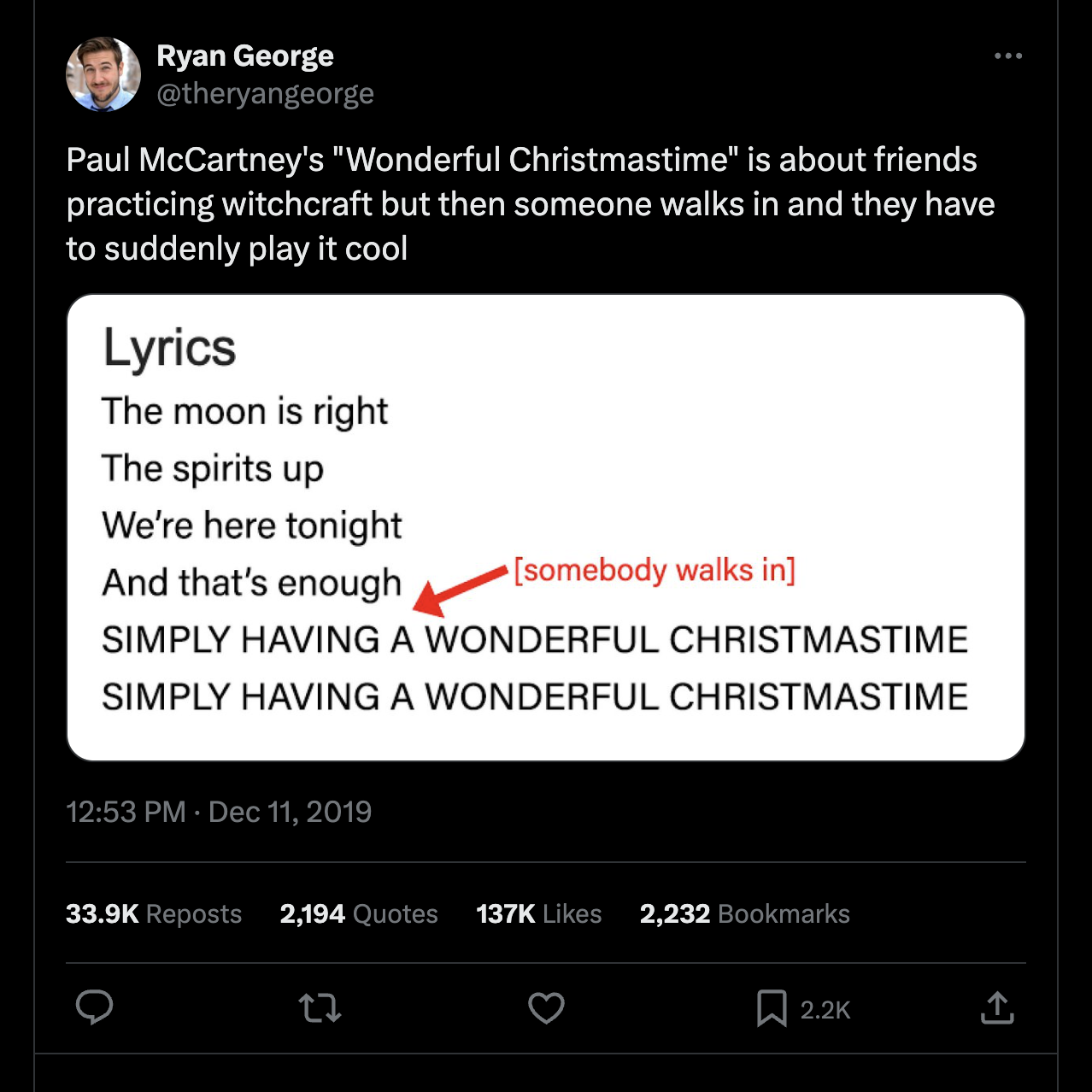
Many people have compared the frivolity of Wonderful Christmastime unfavorably to John Lennon and Yoko Ono’s Happy Xmas (War Is Over).
John and Yoko’s earnestly political songs get different reactions from different age groups. The boomers are reverent, while my college-age students roll their eyes. The kids certainly appreciate the anti-war sentiment, but they find the delivery to be naive and out of touch. Meanwhile, while they find Paul McCartney to be goofy, they hear his goofiness as appropriate to his musical context.
The synths
Aside from the lyrics, the synthesizers are the most contentious aspect of Wonderful Christmastime. If McCartney had sung the song over piano or guitar, it’s hard to imagine anyone having strong feelings about it one way or the other. But the synths were a bold choice, and bold choices can be divisive. MNateShyamalan sums up the issue well.
Get the MusicRadar Newsletter
Want all the hottest music and gear news, reviews, deals, features and more, direct to your inbox? Sign up here.
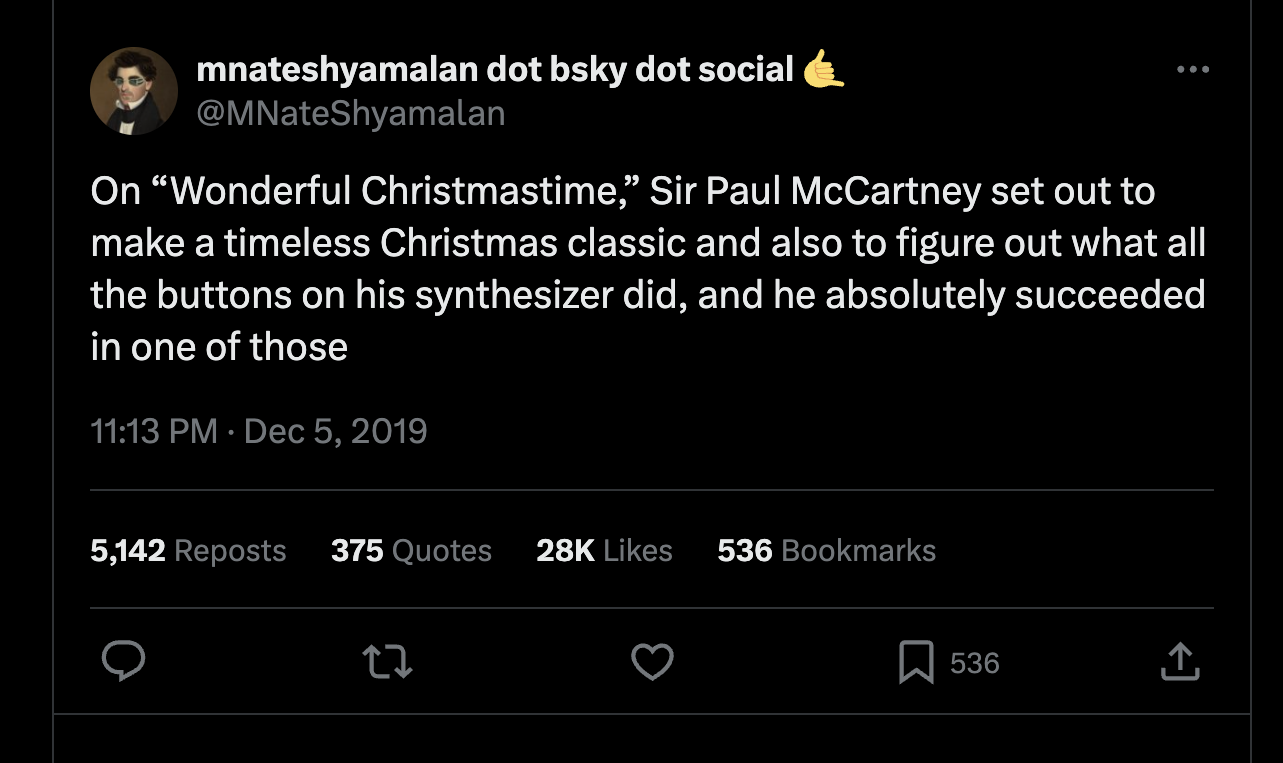
The main synth, the first one you hear, is the Yamaha CS-80, much beloved by Vangelis. The high-pitched strings are played on the Sequential Prophet-5, omnipresent in the hits of the 80s. Reverb Machine has a tutorial for recreating both patches.
Twitter comedians might accuse Sir Paul of using his Christmas ditty as an excuse to play with his new toys, but that accusation makes more sense when applied to Temporary Secretary, which sounds more like a tech demo than a song.
It was a wildly counterintuitive idea to build a Christmas song around the most advanced synthesizers available in 1979. Holiday music is a conservative genre, calling back to the familiar styles and tropes of previous eras. The audience for hokey Christmas songs does not overlap much with the audience for cutting-edge synth sounds.
However, in 2024, the CS-80 and Prophet-5 are no longer shocking or new. Quite the opposite: young people hear vintage analog synths as warm and nostalgic, the way that people in 1979 heard horns and strings.
The rhythm
I like the synths, but the aspect of the Wonderful Christmastime that bothers me is its tempo. For the first few bars, it seems like it’s a nice laid back 95 bpm. However, when the vocals enter, it turns out to actually be an anxiety-producing 190 bpm. The eighth notes are swinging, but at such a fast tempo there isn’t much room for that swing to breathe. I used Ableton Live to slow the tempo down and add a half-time hip-hop beat, and it improved the vibe significantly.
The CS-80 has tempo-synced delay, with the echoes set to the quarter note, meaning they fall on every beat. But sometimes Paul switches to quarter note triplets, disrupting the square four-on-the-floor feel. The first of these disruptions comes at 0:38, and then it happens more and more frequently as the track goes on until the end section is all four-against-three. That’s very hip, but it’s also a lot more rhythmic information than you are necessarily expecting.
The structure and harmony
Wonderful Christmastime has a strange structure. Nate Sloan, one of my pop musicology inspirations, told Mental Floss: “It moves through the verse section of the song faster than a sleigh with no brakes… Before you know it, ‘that’s enough’ and we’re off to the titular chorus. It’s like you’ve barely finished your eggnog before someone shoves a plate of ham in your face.”
I wouldn’t even say that the song has a chorus; it’s more of a refrain, a single line that repeats at the end of each verse. It’s an old-timey structural device, something you associate more with Tin Pan Alley and the Great American Songbook.
Sloan also points out that while the verse/refrain structure is as simple as a hammer driving nails, the chords under the refrain are not. Sloan calls them “deep and jazzy, drawing on the rich harmonic vocabulary of 1940s and '50s pop music, when most of the current holiday canon was composed”. This is an era of pop that Paul McCartney knows and loves from his childhood singing songs around the piano with his family, as he explains in this charming interview with Steven Colbert.
That A7 chord is the outlier; it belongs to the key of B minor, not B major. That chord gives the refrain its tinge of melancholy
So what are the chords? The verse progression (and the first half of the intro) is four variants on a B chord: Bmaj7, B6, B(add9), and finally a plain B triad. In the refrain, the harmonic rhythm speeds up from one chord every two bars to two chords per bar. The first two chords are C#m7 and F#7, a jazzy ii-V progression. These are followed by D#m7 and G#m7, the iii and vi chords, which are even jazzier. Finally, the phrase concludes with Emaj7, A7 and B. That A7 chord is the outlier; it belongs to the key of B minor, not B major. That chord gives the refrain its tinge of melancholy.
There are also the two bridge sections, which are a little different from each other. The first bridge begins with B, C#m and F# under the line “The choir of children sing their song.” This repeats, and then under “Ding dong ding dong”, the chords are B, B7, E/B, B. This also repeats. The B7 chord has A-natural in it, another brief but striking departure from the prevailing B major feel. Finally, under “Doo doo doo doo doo”, there’s a long E chord, finally resolving to B. The second bridge begins the same way as the first, and then ender the “ding dongs”, it goes through various sequences of B, C#m, E and F#.
The outro introduces yet another new progression, alternating Bmaj7 and C#m7 before cadencing with F#. The very end alternates B and Bmaj7 before ending on a sweet B(add9). All this jazzy harmony pairs oddly with the synths. I find that when I play the tune on acoustic guitar, it sounds more natural. In fact, it makes perfectly plausible light jazz or bossa nova.
The cultural footprint
For better or for worse, Wonderful Christmastime has taken its place in the holiday canon, so it has inspired a lot of cover versions. I like this ultra-minimalist take by Hakushi Hasegawa.
Xavier Omär & Sango give it a creamy downtempo R&B spin.
If you find synths objectionable, you may prefer to hear Diana Ross sing the song backed by orchestral instruments.
You may also enjoy hearing Sir Paul himself singing the song acapella with Straight No Chaser.
There are also some less reverent takes out there. Michael M imagines how the song would sound if the only lyrics were “the moon is right”.

Hip-hop producers are drawn to the synths, and there have been some nice sample flips. I like Simply by De La Soul.
Surprisingly, the instrumental pairs very well with Biggie Smalls’ Big Poppa.
The samples and remixes get their resonance from the fact that Wonderful Christmastime has attained iconic status, even in the face of sustained mockery. In his ranking of all 214 Beatles songs, Bill Wyman says: “Paul McCartney is one of the most remarkable, and luckiest, people of the 20th century… More than any of the Beatles, and indeed more than just about anyone you can think of, he has radiated happiness and contentment (and not in a self-satisfied way) for most of his life.
"If Paul McCartney has a dark side, it is the voice inside him demanding that he dominate every genre of pop music with his cosmically pleasurable, almost ridiculously facile skills.” Wonderful Christmastime is a contented song. That can be annoying for people who look to pop music for danger or dissent. But if you want to be welcomed home, Paul McCartney is your guy.
Ethan Hein has a PhD in music education from New York University. He teaches music education, technology, theory and songwriting at NYU, The New School, Montclair State University, and Western Illinois University. As a founding member of the NYU Music Experience Design Lab, Ethan has taken a leadership role in the development of online tools for music learning and expression, most notably the Groove Pizza. Together with Will Kuhn, he is the co-author of Electronic Music School: a Contemporary Approach to Teaching Musical Creativity, published in 2021 by Oxford University Press. Read his full CV here.






